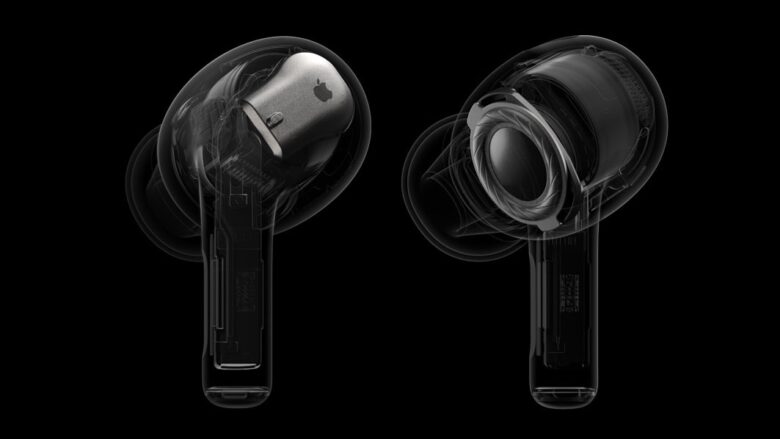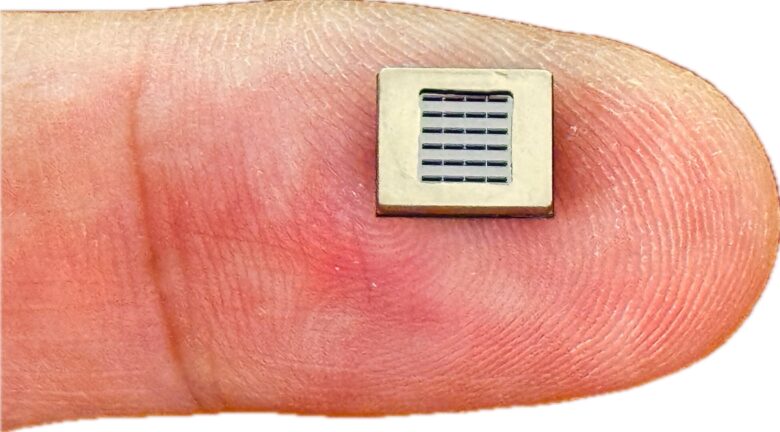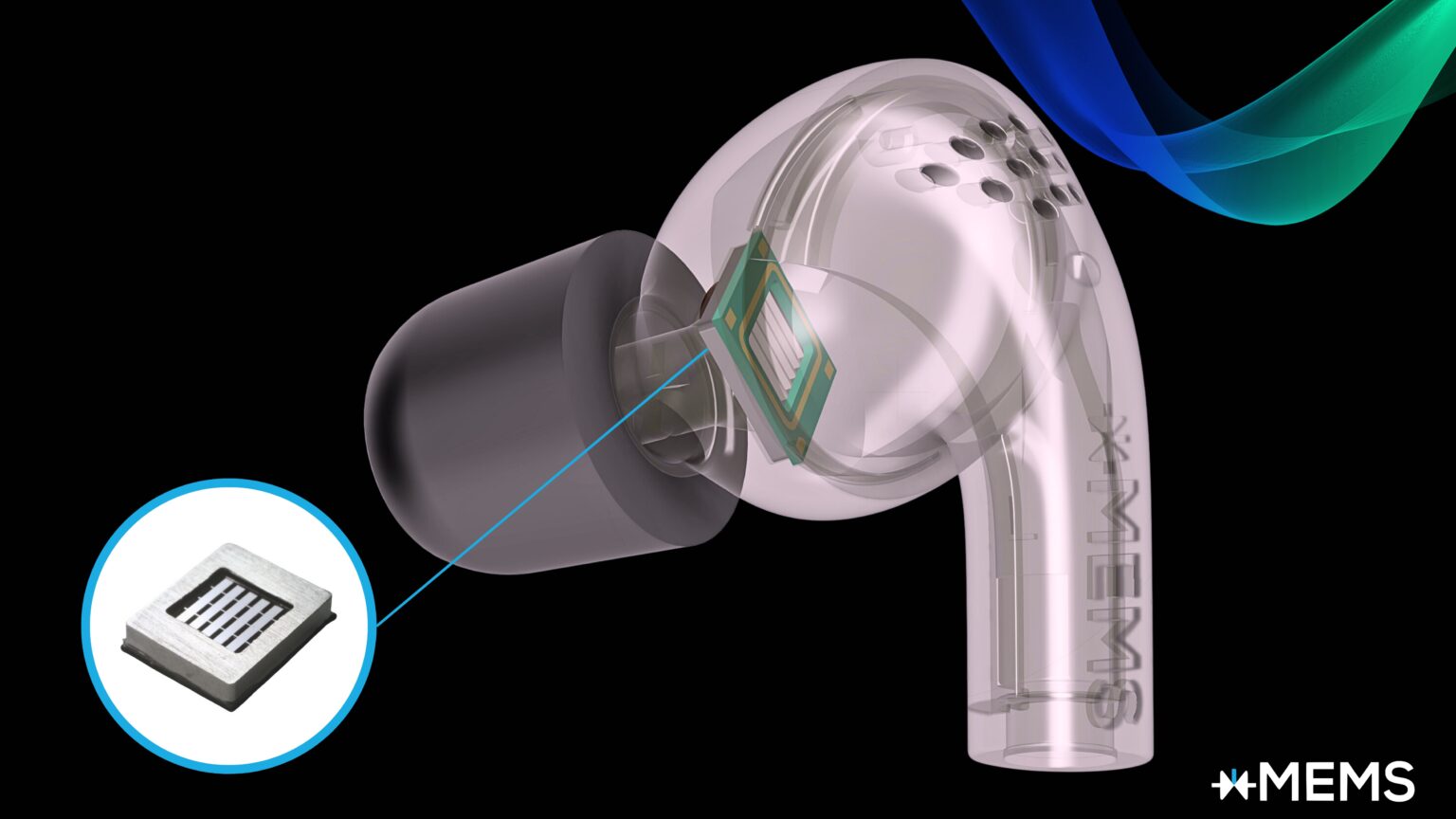xMEMS Labs is bringing what it calls breakthrough technology to the wireless earbuds market late next year after a CES 2024 debut — the Cypress ultrasonic speaker. It turns ultrasonic waves we normally can’t even hear into full-frequency, hi-res audio with remarkable detail, the California-based semiconductor company said Tuesday.
The solid-state microspeaker, which will find its way into various companies’ earbuds and headphones — hello, AirPods? — generates low-frequency sound pressure for a full bass response, according to xMEMS Labs.
That makes the ultrasonic speaker a true replacement for legacy speaker technology that has only been refined, not replaced, since your great-grandparents rocked the Victrola.
xMEMS Labs’ Cypress ultrasonic speaker
Speaker design hasn’t changed much in decades. Most modern speakers are “dynamic speakers,” a design that hasn’t fundamentally changed since it was introduced in the 1930s. Dynamic speakers use a coil and magnet to vibrate a diaphragm to produce sound — including the tiny speakers found in AirPods. xMEMS Labs’ solid-state MEMs speakers are one of the first radically new designs in years.
MEMS stands for “microelectromechanical systems.” They add tiny circuitry to mechanical components. xMEMS Labs‘ new Cypress solid-state MEMS speaker replaces old-school push-air and moving-coil sound reproduction with an “ultrasonic amplitude modulation transduction principle.”
Get it? No? Well, “ultrasonic modulation turns ultrasonic air pulses into rich, detailed, bass-heavy, high-fidelity sound, representing the first no-compromise alternative to the moving-coil concept for high-volume consumer active noise canceling (ANC) earbud micro speakers,” the company said.
In other words, this is a fundamental change from the age-old speaker designs that make sound through an amplifier generating air pushed against a diaphragm.
Using a high-volume semiconductor process, xMEMS plans to do for audio what solid-state tech has already done for HD video, microphones and data storage — essentially taking out the analog without taking out the quality (and improving on it, even). Cypress has 25 patents behind it, the company said.
“By shifting to a sound from ultrasound principle, the xMEMS Cypress micro speaker can now officially replace traditional coil-and-magnet speakers in active noise canceling earbuds,” said Mike Housholder, xMEMS’ VP of marketing, business development and systems engineering. “Cypress maintains all of the benefits of xMEMS’ existing speakers, while being 40 times louder in low frequencies, achieving a key requirement for ANC earbuds.”
Ideal for ANC performance

Photo: Apple
To be specific, the company said Cypress achieves sound pressure levels (SPL) greater than 140dB as low as 20Hz. The company added that’s “consistent with the best 10-12mm legacy coil speakers” found in premium earbuds.
Householder’s reference to “40 times louder” is in comparison to xMEMS’ prior-generation speakers, already found in products from companies like Soranik, Creative and Singularity Industries. The key difference with Cypress is its full-range xMEMS driver doesn’t require a hybrid design adding a component to pump up the low end.
The company also emphasized how MEMS and ultrasonic modulation with super-low-frequency SPL will mean great things for improved ANC performance in earbuds like AirPods Pro:
Cypress’ faster electrical-to-acoustic conversion [than legacy coil speakers] can contribute to wider ANC bandwidth (i.e., extension of ANC to cancel higher frequency noise sources, like a crying baby). Plus, Cypress’ near-constant electrical-to-acoustic conversion time (group delay), can reduce DSP filter complexity which, in turn, leads to shorter DSP latency, rounding errors and power consumption when processing ANC.
Producing hi-res audio more efficiently
Cypress takes advantage of the speed, precision and uniformity associated with MEMS to produce hi-res audio more efficiently than legacy coil speakers can. Rather than simply generating sound in an audible band like coil speakers, Cypress uses technology to produce an exact acoustic copy of the signal across all frequencies.
The microspeaker’s modulator generates an ultrasonic wave following the amplitude of the source audio signal. Then a demodulator transfers the wave’s energy down to a baseband, resulting in sound we can hear. Because it’s an exact copy of the original signal, it’s more faithful to a recording than other speakers, the company said.
And that includes today’s high-resolution sound formats and Spatial Audio.
“Cypress not only revolutionizes how sound can be reproduced from an electric signal, but it also redefines how it should be reproduced,” said Jemm Liang, xMEMS CTO.
xMEMS Cypress ultrasonic speakers’ key features

Photo: xMEMS Labs
Here’s a bullet list xMEMS uses to describe what will make Cypress great:
- Faster mechanical response for unrivaled detail, clarity and separation
- Near-zero phase shift for the most accurate, unaltered sound reproduction
- Superior part-to-part phase consistency for unparalleled spatial imaging accuracy
- Rigid silicon diaphragms eliminate speaker breakup for unmatched mid/treble clarity.
- Non-magnetic, for lower weight and reduced electromagnetic interference
- Superior quality, reliability and part-to-part uniformity from the solid-state semiconductor
process
Cost-effective production
xMEMS added that Cypress ultrasonic speakers can compete on cost with speakers now in mass-market headphones and earbuds because of the company’s manufacturing partnership with TSMC — the same company that makes Apple silicon chips.
In the process, new thin-film piezo materials are key, as is a silicon diaphragm/driver replacing what would normally be plastic, paper, carbon fiber or another material in a balanced-armature or dynamic driver. Cypress’ small footprint saves space and weight, too, likely resulting in even smaller and lighter earbuds than you’re used to.
xMEMS said high-capacity production capacity that should result in consistent and reliable products is already in place. As far as cost goes, that remains to be seen in production earbuds that include Cypress.
When can I get ultrasonic earbuds?
xMEMS is currently offering Cypress prototype samples to select early customers, with demos planned by appointment at CES 2024 in Las Vegas, January 9 through 12. Production-candidate samples of Cypress and the companion Alta controller/amplifier chip will become available in June 2024, said xMEMS. It plans mass production for use in actual products starting in late 2024.


